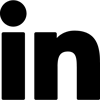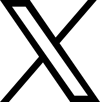On February 6, 2017, a collaborative journalism verification project called CrossCheck was announced to help the public “make sense of what and who to trust in their social media feeds, web searches and general online news consumption.” It was initially started to help address concerns around the French elections (the first round is held in April). Led by First Draft News, with 17 newsrooms and the Google News Lab participating, it’s a major step in the ongoing international fight against fake news stories.
The benefits are immediately clear. With multiple newsrooms working to debunk the same stories, the truth comes out sooner – and with more power. After all, many voices are louder than one. And by using a number of tools and tech platforms, they’ll be able to identify and check stories faster.
We’ve all heard the outcry from advertisers concerned about brand association with fake news content and sites. But it goes well beyond advertising, impacting the entire media industry (both traditional and digital), politics, and even society at large. The next generation is already consuming more content online than previous generations, so it’s important to give them the knowledge and tools to parse through online content.
It’s not just students that could use the help; according to BuzzFeed, fake news headlines fool American adults 75% of the time. Their study also points out that people who rely on Facebook as a “major” source of news seemed more susceptible to fake news headlines. The Pew Research Center reports that people get their news 35% of the time through social media, with 23% sharing a fake news story, either knowingly or not.
The call for more proactive measures is being heard across the globe. We’ve seen major global companies ban specific sites like Breitbart from their list of potential ad publishers. They’re also pressuring companies for more visibility and protection, especially in programmatic transactions.
However, CrossCheck is almost entirely made of non-U.S. companies. It’s not surprising that most participating companies are French, when you consider its inception. But when we take a step back and look at the bigger picture, we’re left with one big question: why is this collaborative approach focused in Europe?
Fake news is rampant in the U.S. media landscape. And consider this: the US represents the biggest share of total media ad spending worldwide (35%, according to eMarketer). That’s more than double the amount of the next biggest market, China.
It’s also complicated by the fact that POTUS often claims a news story reported by a reputable media outlet is false, without any proof whatsoever, or calls the news media the “enemy of the American people.” (For examples, see this New York Times article with images of POTUS tweets, and this article on Bloomberg. There are countless more out there.) When someone in a position of power spreads mistrust in mainstream media, some people unfortunately believe it.
The fact is that fake news hurts the entire online community. Regardless of country.
And regardless of competition. As CrossCheck notes, the coalition ultimately helps save time and effort for all companies involved. It’s also helping the newsrooms generate new articles. By using social listening tools and collecting reader questions, they can not only identify stories that need checking (and probably debunking), but also topics that people want to read more about.
The nature of fake news and its incentives make it easy to quickly create new sites, articles, and revenue. While a lot of the fake news challenges and solutions can be tracked back to tech companies like Facebook and Google (who are responding with much-needed, small steps in the right direction), there’s also opportunity for reputable media companies to pitch in. There’s not only advertising revenue on the line, but also the perception of media as a whole. Media companies should therefore be actively invested in rooting out the bad actors.
It’s a threat that goes beyond industries, and beyond markets. It’s important for the U.S., and all other affected markets, to step up and step into collaborative action.
 Share on LinkedIn
Share on LinkedIn Share on X
Share on X


